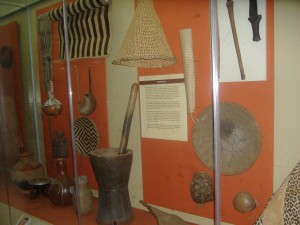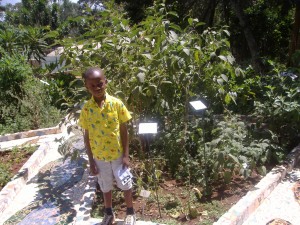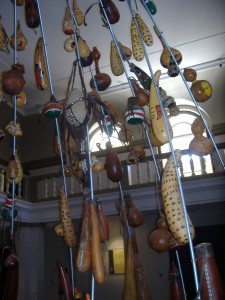The International Year of the Potato gives way to the International Year of Natural Fibres. That include hemp?
Nibbles: UG99, Medicinals, Participation, Climate change, Svalbard
- Rust never sleeps. Good news and bad from CIMMYT.
- Medicinal plant, heal thyself!
- Seven-step programme to livestock breed recognition in new New Agriculturist.
- “The most extreme summers of the last century will become the norm…“
- Svalbard Global Seed Vault makes another Top 10 list.
Williams honoured
Congratulations to our friend and colleague David Williams. He was co-author on a paper about ancient squash seeds that made Archaeology’s Top 10 Discoveries of 2007. Sorry we didn’t catch it earlier…
(Not much) agrobiodiversity on display in Nairobi museum
The main building of the National Museums of Kenya in Nairobi has had a facelift, courtesy of the EU. Pretty good job on the outside, but the new exhibits were a bit of a disappointment.

There’s a big hall about Kenya’s animals, of course, and another series of displays about its cultures, arranged by life-stages (birth, youth, adolescence, initiation: you get the picture), though this includes very little about agriculture:

But there’s nothing at all on the country’s ecosystems and protected areas, and nothing on its plants, at least inside the building (apart from a display of an herbarium specimen in the small hall describing the museum’s history). There is a little botanic garden dedicated to medicinal plants (arranged by family, the wisdom of which is debatable), but this misses the opportunity of describing the Amaranthus on display as not just a medicinal but also a nutritious traditional leafy green (see my next post):

However, the entrance hall does have a terrific display of cucurbit diversity:

These bottle gourds are used by the Maasai and other pastoralists to store water, milk, blood, and mixtures thereof. Here’s a close-up:

Taro in the Indo-Pacific
The 19th Congress of the Indo-Pacific Prehistory Association is going to take place 29 Nov.-5 Dec. 2009 at the Vietnam Academy of Social Sciences Conference Centre, Hanoi, Vietnam. One of the suggested sessions is on taro:
Wet Cultivation of Colocasia esculenta in the Indo-Pacific: Archaeological, Technological, Social, and Biological Perspectives.
David Addison (American Samoa Community College) and Matthew Spriggs (Australian National University)
add1ison(at)gmail.com; matthew.spriggs(at)anu.edu.auWet cultivation of taro (Colocasia esculenta) is among the most productive traditional agricultural techniques in the world, rivaled only by the homologous systems based on rice (Oryza sativa). Some of the largest stone constructions in the Pacific relate to wet taro cultivation. Research on wet taro in Oceania has focused on: the role of agricultural intensification in development of political and social complexity; aggression and territoriality; risk management; and initial island colonization. This session seeks to bring together researchers from across the Indo-Pacific region to discuss the wet cultivation of Colocasia esculenta from diverse perspectives. Participants will be asked to have papers ready for posting to a website by 1 October 2009. This will give everyone a chance to read each other’s ideas in detail. The IPPA session will then consist of short presentations and ample time for discussion. Selected participants will be asked to revise their papers immediately after the conference for publication in an edited volume scheduled for early 2010.
Thanks to Lois Englberger for the tip.